With the beauty of prints at the top of my mind, I couldn’t help but focus on the other works on paper that were shown during Armory week. Here’s a list of my personal favs. I’m not going to lie, they’re not all candy and bubblegum, but they hit me in the gut something powerful.
They’re not in any particular order because art isn’t a zero-sum game. There’s always room for more great work, and all of these are wonderful in their own ways.
1. Federico Solmi’s large-scale, one-of-a-kind books (each contain six acrylic paintings) are some of the most unique works on paper I’ve ever seen. They feel like medieval folios—heavy with paint—yet the pages still turn easily. Solmi’s Counterfeit Heroes series is the newest and frighteningly timely iteration of his many years of work indicting power-hungry politicians and celebritism. His images are the right kind of creepy. He also reminds us of the very real link between our present and our imperial past.
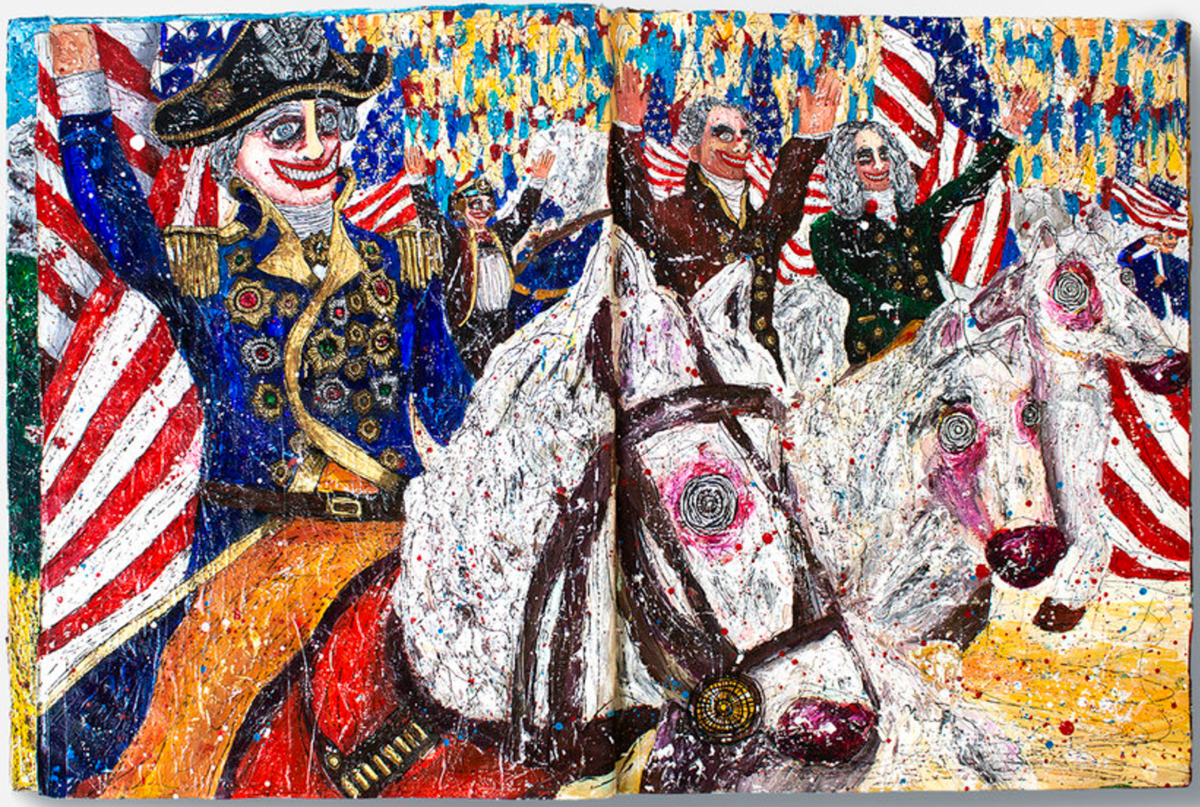
The Loving Fathers, 2018. Acrylic paint, gold leaf, silver leaf, painted easel, one of a kind book made and bound by hand by Federico Solmi at Ronald Feldman Gallery at The Armory Show. Images courtesy Ronald Feldman Gallery.
2. Anita Groener continues her hauntingly beautiful confrontation with the global migrant crisis. Made of twigs and paper cut-outs, she specifically uses the photographic images through which most of us experience one of the defining tragedies of our age—from the comfort of our couches. The shadows that Groener creates are integral to her works. They’re ghostly reminders of her subjects’ lack of visibility and sometimes include additional images that only appear once light enlivens the works on the wall.

Your Shadow at Evening Rising to Meet You (front view), 2019 by Anita Groener at Gibbons & Nicholas, Art on Paper.
3. Nadine Faraj’s paper cave is a liberating immersive installation. One of the main reasons I go to art fairs is for experiences like the one she created. The entrance was curtained and pitch black, making you find your way into the cave of the artist’s Mesopotamian matriarchal ancestors lit only by viewers’ flashlights. Faraj’s practice has previously included mystical, erotic images. But the newly energized feminist activism of the #metoo movement inspired her to share this representation of the real-life cave paintings in northern Iraq made by the women in her family to educate and initiate their daughters into their secret sisterhood. I was lucky enough to take it in with a newly initiated sisterhood of my own!
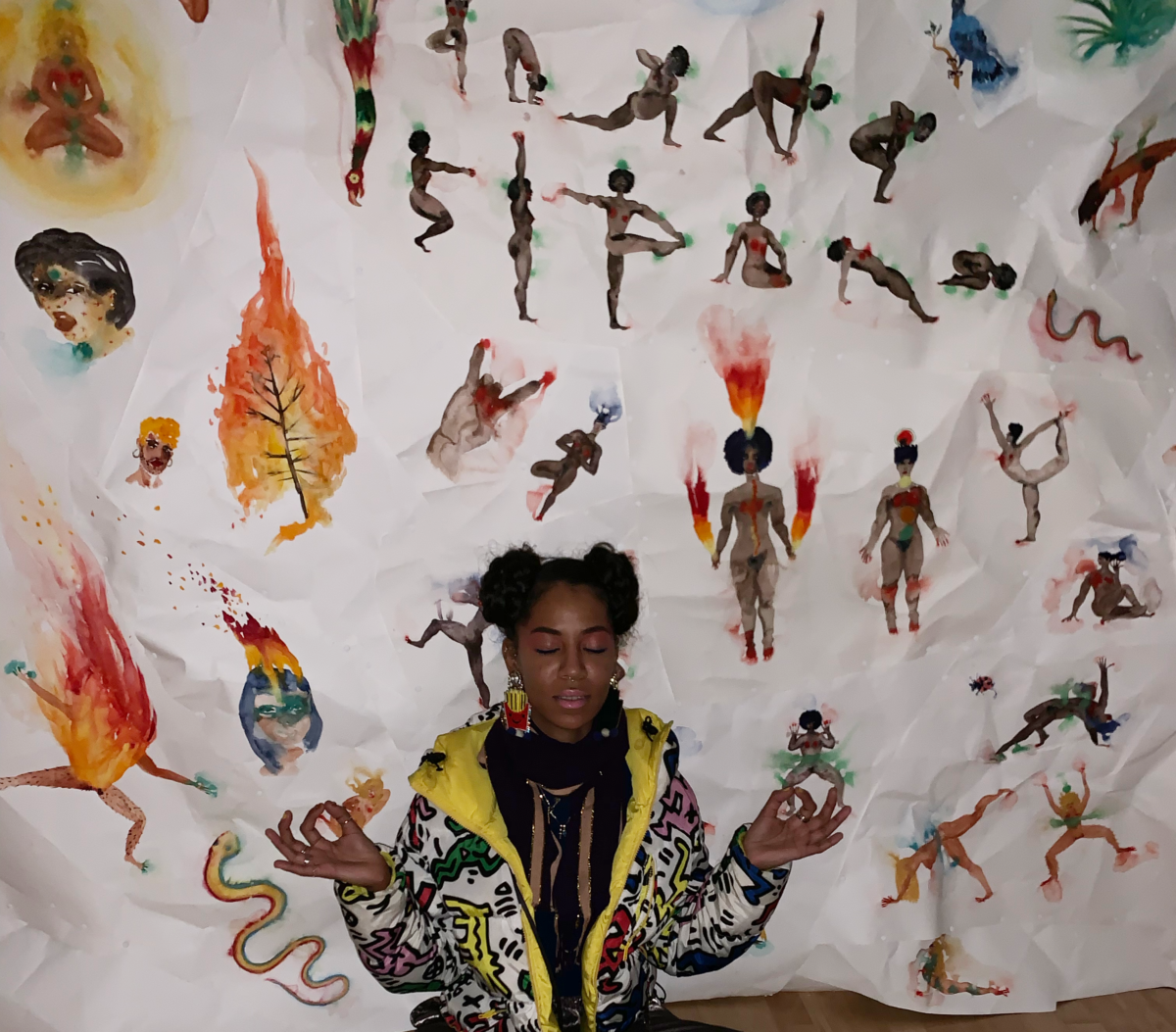
Artist Jasminfire posing inside Ages Ago Every Cell In Your Soul Capsized Forever Into This Golden Sea, a watercolor on paper by Nadine Faraj at Anna Zorina Gallery at SPRING/BREAK Art Show.
4. Raquel Malwauf’s land- and sky-scape drawings have the same velvety texture that makes great drypoint prints so appealing. I got lost even in her small works—I felt like I walked right into them. Their exquisite depth is heightened by her occasional roughening of the paper into three dimensions. For all its aesthetic pleasures, though, this new body of work builds on her earlier themes of destruction, capturing the darkness threatened by the onslaught of human-driven ecological disasters.
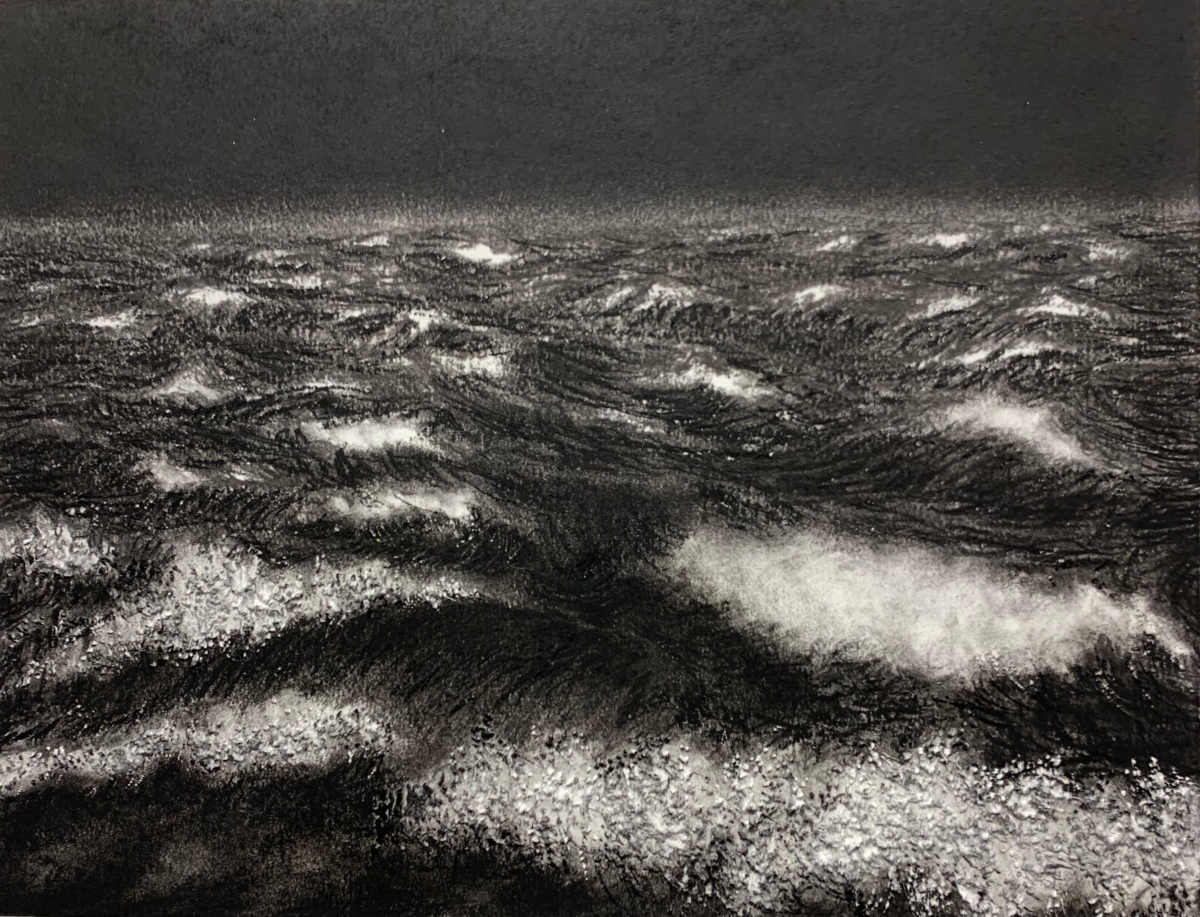
From Raquel Malwauf’s Black Sea series (charcoal pastel on museum board) at Livingstone Gallery, originally slated for Volta. They found a home at Art on Paper when Volta was canceled at the very last minute.
5. Gil Batle’s graphite and ink drawings offer heartbreaking insight into mass incarceration in the U.S. Unlike the frenetic compositions of many outsider artists, Batle’s works are marked with meticulous restraint. They tell stories of improvised weapons made from repurposed trash and stashed in prison gardens like carrots. With brutal intimacy, they communicate the immense struggle of surviving and, especially, ending the cycle of incarceration.

Untitled, 2018 (detail) from Gil Batle’s graphite and ink on paper Sanctuary series at Ricco Maresca at Independent.
6. Brian Andrew Whiteley’s Legacy Stone is iconic, and so are the traditional rubbings that have been made from it. In March 2016, Whiteley sited the original work in Central Park. The piece wasn’t meant as a threat (note the careful lack of a death date), but to spark public discussion about the ideological path that then-candidate Trump was on, as well as its potential repercussions. Relevant much?
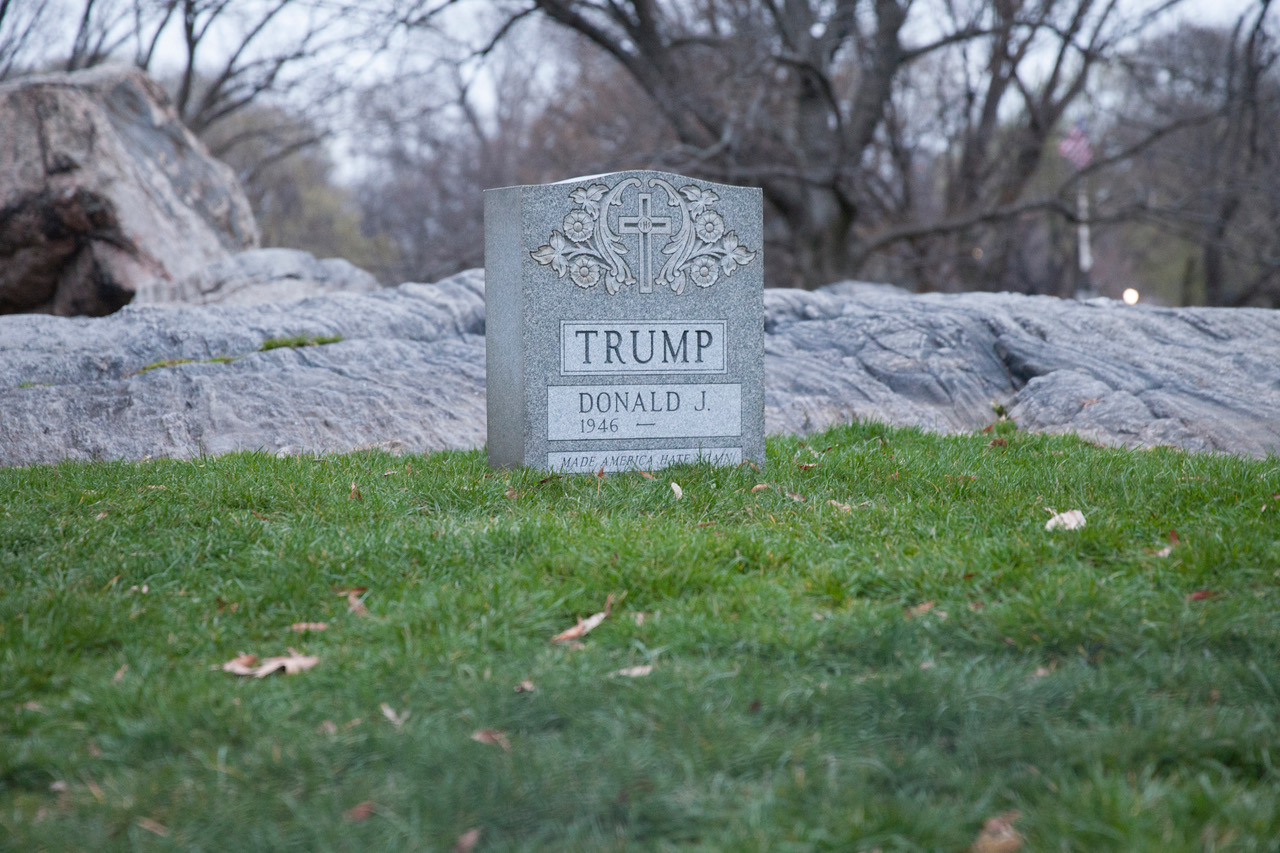
Whiteley’s Legacy Stone as originally sited in Central Park.
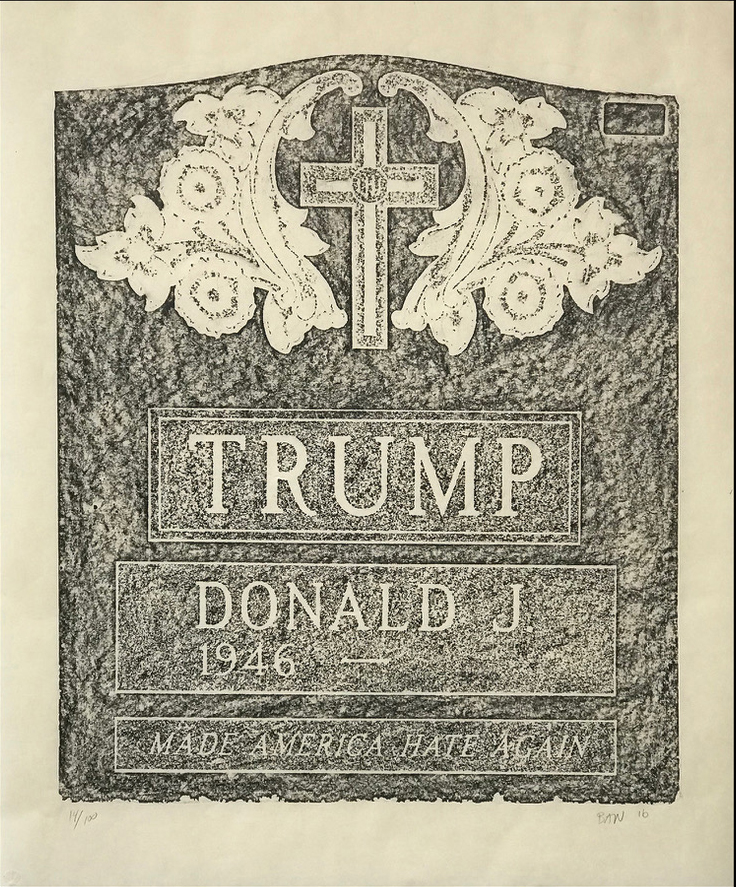
Limited-edition rubbings of Whiteley’s Legacy Stone made with pigmented wax on Japanese paper at Center Street Studio at Art on Paper.


